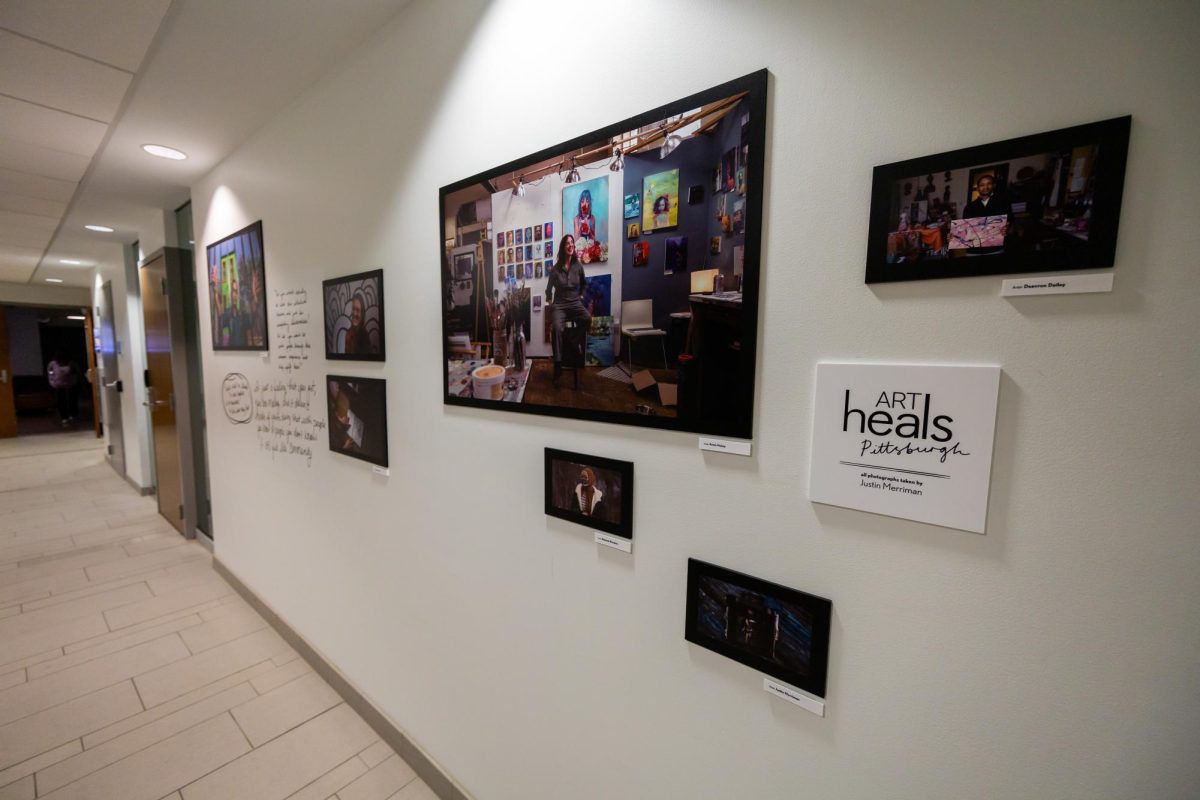Mayor Bill Peduto wants to give every child in Pittsburgh access to pre-K education.
“If I had a magic wand and I could give one thing to the city right now, it would be pre-K education for every child, so that by the time they start kindergarten, they all start along together,” Peduto said Thursday morning as he introduced a presentation on early childhood development from Pitt researchers.
Alongside Peduto and Pitt’s Senior Vice Chancellor for Engagement Kathy Humphrey, a panel of four Pitt researchers and community leaders spoke in the Connolly Ballroom on Thursday morning about the importance of discussing race with young children. Pitt’s Office of Child Development, Center for Urban Education and Supporting Early Education and Development lab sponsored the researchers’ report, called “Understanding PRIDE in Pittsburgh: Positive Racial Identity Development in Early Education in Pittsburgh.”
The report, which the School of Education published in late March, showed that messages regarding race often impact children by the time they’re 3 years old.
“By 6 years old, kids are already expressing prejudicial attitudes toward people of minority races,” Aisha White, the director of Ready Freddy: Pathways to Kindergarten Success, said. “Once solidified, these attitudes become much harder to change.”
The researchers observed children in nine classes throughout Pittsburgh and distributed surveys to parents and teachers. Their recommendations include collaboration between teachers and parents and required racial awareness training for educators on teaching cultural and racial pride.
White said literature, like the book “Shades of Black,” is a good first step to creating a positive foundation for viewing black physical features.
“When young children have a positive racial identity, they are able to own and embrace their racial and ethnic heritage fully and with dignity,” White said.
According to White, teaching healthy racial attitudes is critical because when young children have positive racial identities, they can embrace their heritages and wear their races proudly.
The problem, White said, is the gaps in the existing research and resources needed to implement this kind of education.
According to the report, 33 percent of black third, fourth and fifth graders read at a proficient level, compared to 67 percent of white children. It also found that some children do poorly in school because of negative self-identities they’ve developed.
There are not many materials teachers can use directly with young children, White said, and the materials that do exist are not appropriate for preschoolers.
For Shannon Wanless, an assistant professor of psychology in education at Pitt, the solution to these disparities lies in starting conversations about race — even if adults are uncomfortable with those conversations themselves.
“Many of us are not exactly sure how to begin these conversations with young children,” Wanless said. “Children pick up on how we feel when discussing these things. They pick up on our discomfort.”
She said the “colorblind” approach to race — where children are taught to ignore race — isn’t working, because racial biases are often subtle in children and need to be addressed deliberately and consciously.
Peduto said changing race discourses for children can lead to other positive changes as well, such as ending poverty.
“If we can take this critical step, and at the same time work toward universal pre-K, we can break cycles of poverty,” Peduto said.


